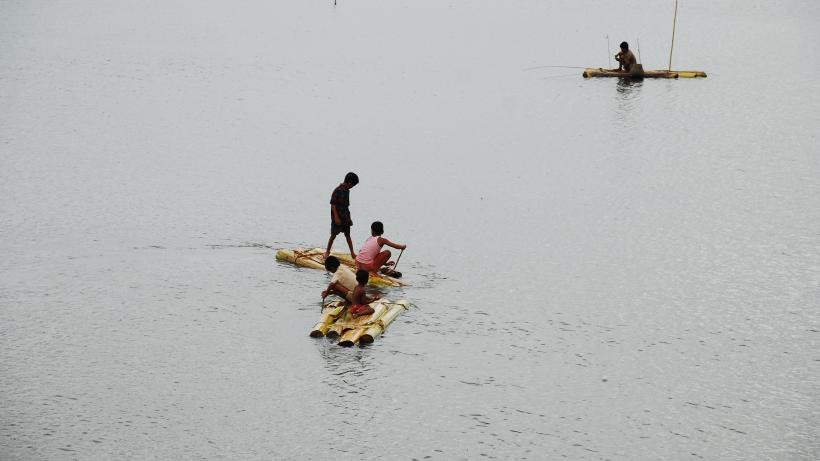
Leaving no one behind: Vulnerable communities need smarter strategies to adapt to a changing climate future
The effects of climate change are felt more keenly by poor communities already facing the double burden of poverty and low development. Thus, climate change policies must be created keeping their unique vulnerabilities in mind and help them build resilience. In the first part of this blog series, we explored energy transition, market integration, and leveraging finance as key ideas for mitigating the effects of climate change.
Climate change causes approximately 150,000 deaths per year globally, disproportionately affecting developing countries. It threatens many of the world’s poorest households, often leaving them with no option than to migrate. For example, in recent years, rising temperatures have led to droughts in the Horn of Africa, triggering hunger, diminished livelihoods (as a result of reduced agriculture productivity), and premature loss of life, especially among the elderly.
It is thus the world’s poorest households and people that need the most urgent protection from climate change, especially in a post-pandemic world. For developing countries that are already combatting the adverse impacts of climate change, it is necessary to take a global approach to enable them to adapt to changing climate conditions and build resilience. In this blog post, we explore three principles for climate change adaption strategies viewed through the lens of an interconnected world, given experiences of the current pandemic.
Adaption strategies
Climate change can affect all aspects of an economy, from triggering floods that destroy capital and wipe out economic activity, to lowering agricultural yields, and decreasing productivity levels. Adaption strategies are concerned with responding to such climate shocks, and also enhancing preparedness to minimise their negative impacts. Good climate change adaption policies can help build resilience, and protect lives. It is necessary to incorporate the following principles within such adaption strategies.
- Income growth: Income growth at a household level is a way to protect the most vulnerable, especially in the context of the vulnerabilities introduced by the current pandemic. This will allow for an immediate improvement in the health of the poorest communities and reduce their vulnerabilities to future climate shocks. Income growth is projected to reduce the mortality impact of climate change by almost 80%, to 28 deaths per 100,000 people. The precise mechanism of income growth varies across sectors; however, this should be considered as a key cross-cutting principle in any climate change adaption strategy. For example, maintaining remittance channels from both sender countries and recipients is important to enable the poorest to receive remittance income, which can also be invested long-term for productive income growth.Income growth at a national level is also important, which in turn can generate inclusive and sustained growth, thus reducing vulnerability to climate change. This goal includes reviewing the policy that affects growth, trade, and structural transformation, to be considered with a climate adaption objective.
- Access to technology: Households and firms that are vulnerable to climate change can use technology to adapt and minimise its adverse effects. For example, reduced agriculture yield due to low rainfall can be mitigated through irrigation technology. In addition, there is evidence that enabling people to purchase technology that protects them from high temperatures, such as air conditioners, improves health and productivity. The two main barriers preventing people from accessing technology that allows them to adapt to climate change is cost and technical knowledge of available options. These can both be overcome through support to move adaptive technologies towards being a public good rather than a private one.Innovative financing models can also be used to encourage take-up of technology (an example of this mentioned in part 1 of this blog series is M-KOPA, a pay-as-you-go model in Kenya that makes solar power-based home systems affordable for low-income households). However, such financing might require the support of key players and organisations internationally, including philanthropic foundations and development finance institutions, as well as global collaboration to develop new climate-resilient technology for vulnerable communities. Training can also enable people understand new technologies and comfortably make choices that will help them adapt to climate change. This includes public information campaigns and the promotion of climate-resilient technology.
- Localised information: Generating localised information is key to informing governments and individuals about the potential impacts of climate change where they live. Global efforts have so far been focused on aggregate and sectoral levels; however, it is increasingly important to also focus on generating information and innovative solutions at the individual, community, and local levels to increase adaption and resilience amongst the most vulnerable. Generating and disseminating accurate information on issues such as rising sea levels, changing agricultural and labour productivity, etc., requires global cooperation among experts. Such information should be utilised to generate timely solutions, such as altering land use or constructing sea walls, depending on the vulnerability in question. This, in turn, can generate useful information to support adaption measures.
Whilst climate change poses a serious global threat, it disproportionately impacts some of the poorest and most vulnerable communities in the world. Today, nations are coming together to combine efforts to combat the COVID-19 pandemic. This same collaborative approach should be taken to address climate change as well, including helping the most vulnerable communities adapt to climate shocks. Such adaption strategies should incorporate principles of income growth, access to technology, and localised information.
Editor’s note: This is the second of the two-part blog series that explores climate change mitigation and adaption strategies for developing countries through the lens of an interconnected world in the context of the current COVID-19 pandemic. Part 1 can be found here.
Disclaimer: The views expressed in this post are those of the author based on his experience and on prior research and do not necessarily reflect the views of the IGC.

